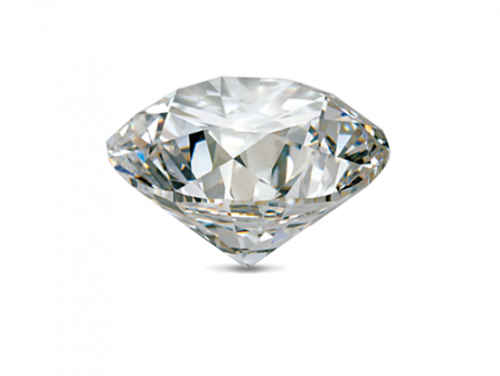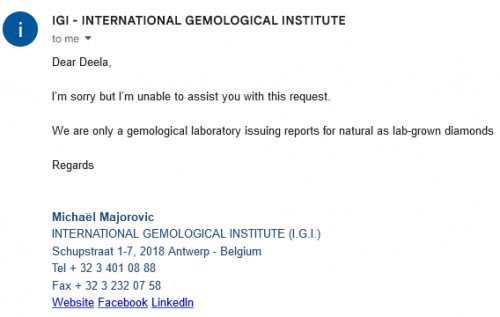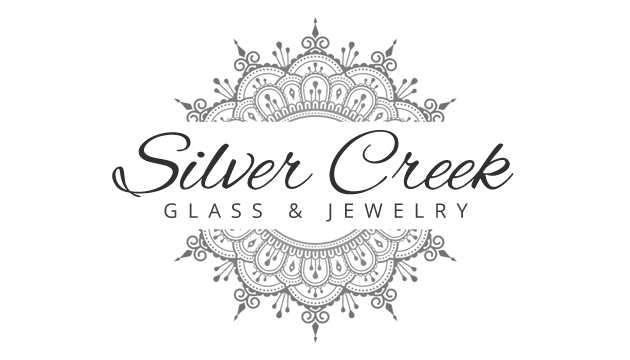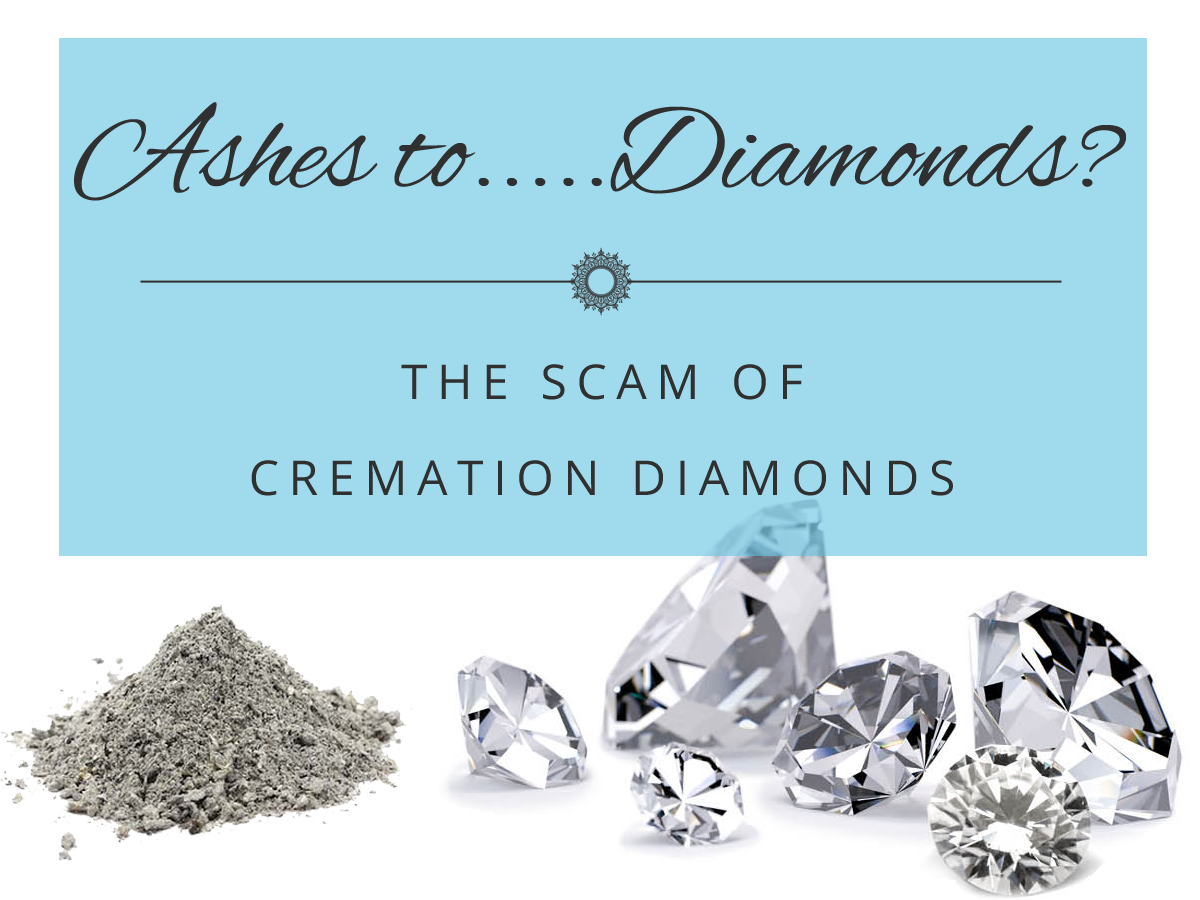Ashes to…..Diamonds?
Cremation diamonds. Have you heard of them? They are supposed to be diamonds that are created from the cremains and/or hair of your loved one. “WOW” right?! The first time I heard of cremation diamonds I was amazed. Who wouldn’t be? The thought of being able to have your loved one (person or pet) turned into a diamond is awesome! I knew this would be something my customers would absolutely love and wanted to be able to incorporate it into my services. I put on my reading glasses and got to work researching cremation diamonds.
A day or so later, I was part of a conversation in a jewelry industry group on Facebook discussing the topic of cremation diamonds and how these companies are doin their customers dirty. Sadly, further research seemed to confirm what the group was saying, but I dug deeper.
Lab Created Gemstones
Before we go further, I feel it’s important to touch on lab-created gemstones. Lab-created gemstones have been around since the 50s and the tech behind this industry is impressive. You can get a lab-created stone that is chemically identical to its natural counterpart, your jeweler won’t even be able to tell the difference. There is a list of solid reasons to purchase lab stones, like your budget, for example. I use both natural and lab-created stones here at Silver Creek which helps me to keep my prices reasonable.

Lab-created diamonds, however, took longer to get to the point they’re at now. Early lab diamonds weren’t very good quality, were tiny, and only really suitable for industrial use. Now, they’re so perfect that the diamond industry is peddling them, even offering them in various qualities (I wish you could see my eyes roll), after spending so many years trying to squash them.
Namedropping to Convey Credibility
The jewelry and gemstone industries have always found creative ways to advertise and market their baubles and they are not alone. Marketing and advertising is a kajillion-dollar industry and companies of all sizes are doing what they can to catch your eye and that’s totally ok! What’s not ok is flat-out lying, claiming that a widget is a cog, and then trying to sell you the widget at cog prices. This shadiness is compounded by the fact that these are marketed to folks who are in a very vulnerable situation, they’ve lost someone they love deeply, are in pain, and are looking for some relief.
Looking at the websites of the cremation diamond makers one of the first things I noticed is that they namedrop gemstone industry appraisers and insurers implying that they regularly work with these companies. On its face, it’s impressive, however, if you contact these companies they are quick to distance themselves.

Here’s an example of what I’m talking about: several of these sites have a section headed “Certificate of authenticity” with photos of fancy grading reports, followed by background information from the International Gemological Institute (IGI) and from the Gemological Institute of America (GIA). The background info is totally accurate but they don’t link to either of these sites. I reached out to both the IGI and GIA via email, asking them if they could grade a cremation diamond for the purpose of insuring it, as this is what you would do with both natural and lab-created gemstones. The IGI’s response: “I’m sorry but I’m unable to assist you with this request.” The GIA didn’t even bother to reply.
What Does the Science Say
Let’s look at 2 specific claims being made by cremation diamond companies:
“Cremation diamonds are made from the ashes of a loved one or pet. Following cremation, a high volume of carbon remains in ashes. At ___________, we extract the carbon from the ashes and use it to grow a diamond as unique as the person or pet you want to remember. As cremation diamonds are made from ashes, they’re always used to remember and honor a person or a pet who has passed away.
Memory diamonds, sometimes known as memorial diamonds, are most commonly made using human hair or pet fur. Everything in the world is made up of carbon — including hair and fur. To make a memory diamond, we extract the carbon from the hair or fur sample and use it to grow a one-of-a-kind diamond.”
When we’re alive and kickin’ we humans contain about 18.5% of carbon, so in theory this diamond stuff sounds like it could be legit. However, during the cremation process, the bulk of that carbon is vaporized and turned into gas, so that drops down to 1-4%, with the majority of the cremains being calcium phosphates, with some other minor minerals. That means that out of the 6 pounds of cremains the average human produces, about 1-3 ounces could contain traces of carbon. These companies say they need 8 ounces of cremains to make your diamond. Even if you sent all 6 pounds of your loved one’s cremains, this is not enough carbon to create a diamond.
“At _____________, the carbon from your loved one’s remains is carefully placed within a machine engineered to recreate the high pressure and high temperature found in the Earth’s mantle. Specifically, this machine produces a pressure of 60,000 atmospheres, or more than 880,000 pounds per square inch. It also produces a temperature of 3,632 degrees Fahrenheit.”
Depending on your state laws, cremation temperatures are between 1400 and 1600 degrees. Organic matter like hair, which is 51% carbon, and its RNA and DNA are vaporized at cremation temperatures. They claim that their presses produce temperatures over twice that of cremation, meaning there is absolutely NOTHING left of the cremains.
What Are You Actually Getting in Return
I’m sure by now you’re wondering what you’re actually getting from cremation diamond companies. While I haven’t actually ordered one, I’d be fairly confident that you’re getting a lab-created diamond of whatever quality you ordered. Are there any bits of your loved one contained in it? Nope. There is no way to verify that they even used cremains to create the diamonds. You don’t see any ash inclusions in the stones as you do with glass or resin.
In Conclusion
Until there’s better regulation in the memorial industry, companies like these will continue to prey on people at one of the most vulnerable times of their lives, by making promises they simply can’t deliver. The purpose of this post isn’t to stop you from buying cremation diamonds, but to help you make an informed decision. To clear the fantastic mist of supposition and theory and illuminate the actual scientific limitations of such grand claims. With the incredible costs of cremation diamonds, I want to help you make your purchase decision with your head, rather than your heart.
Hopefully, you have also seen one of the many articles floating around the interwebs decrying cremation diamonds like, PageSix calling out Mark Cuban for his investment in a cremation diamond business or articles in smaller publications like Mel Magazine calling it a scam. Jewelers, gemstone experts, insurance adjusters, and industry insiders all agree cremation diamonds are complete and total bullshit.
References
Sites I referenced for this post. I’m not linking to any of the cremation diamond companies, as I don’t want to give them the traffic, you can Google them if you want to know who they are.
- Robert James FGA, GG – The Back Story of the Cremation Diamond Report Investigation and Website
- CANA – Cremation Association of North America
- IGI – International Gemological Institute
- GIA – Gemological Institute of America
Do you have any experience with cremation diamonds? Share your thoughts below!


